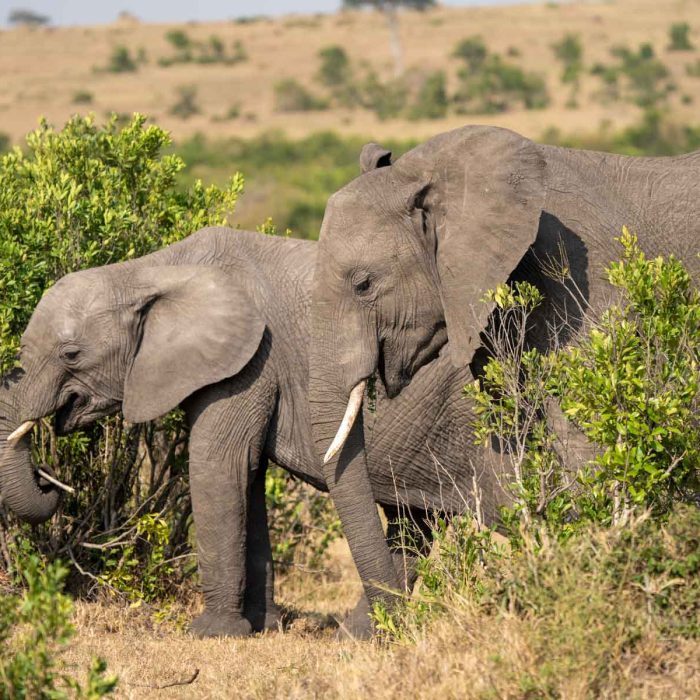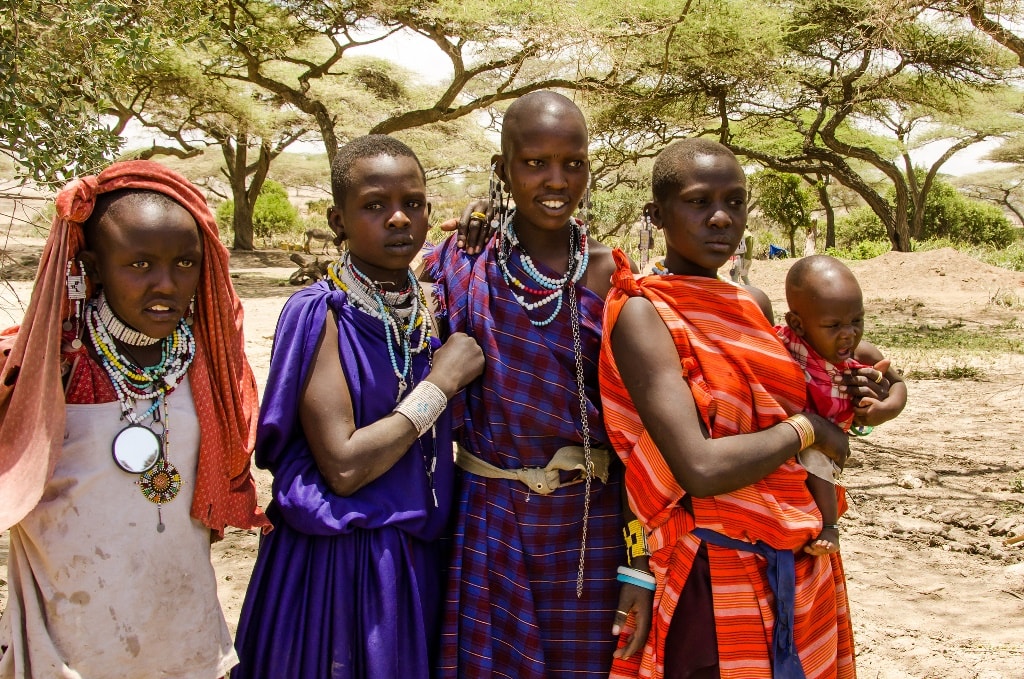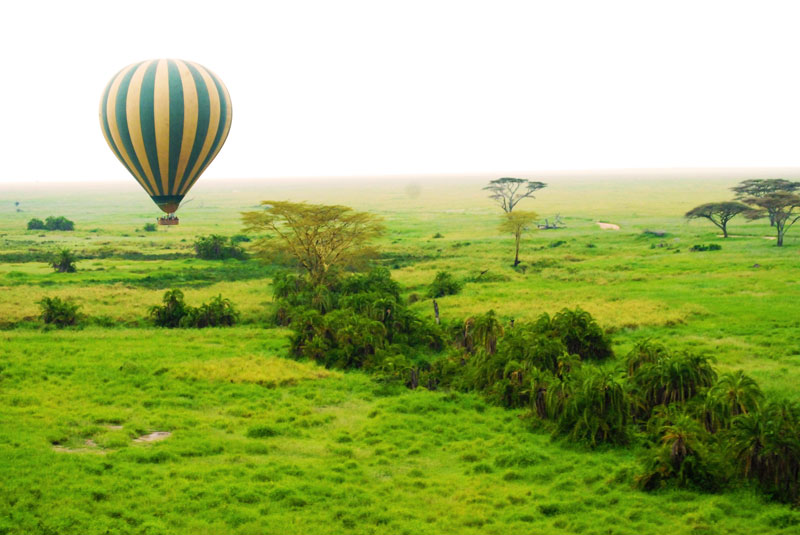Ngorongoro Crater
Description
This vast protected area stretches from Lake Natron (the breeding ground for East Africa’s flamingos) in the northeast, to Lake Enyasi in the south, and Lake Manyara to the east. The area includes the still active Ol-Ndoinyo Lengai (meaning “Mountain of God” in Maa, the language of the Masaai) volcano (which last erupted in 2007.
Olduvai Gorge and the Ngorongoro Crater, the largest unbroken caldera in the world. It has been described as one of the great natural wonders of the world. Eight million years ago, the Ngorongoro Crater was an active volcano but its cone collapsed, forming the crater that is 610 meters deep, 20 kilometres in diameter, and covers an area of 311 sq. km. Spectacular as it is, the crater accounts for just a tenth of the Ngorongoro Conservation Area.
The crater is home to many species of wild game and birds. With the exception of impala and topi (due to fierce competition with the wildebeest) and the giraffe (because there is not much to eat at tree level), almost every species of African plains mammal lives in the crater, including the endangered black rhino, and the densest population of predators in Africa.
A strange thing is that the crater elephants are mainly bulls. The birdlife, which includes the flamingo, is mainly seasonal, and is also affected by the ratio of soda to fresh water in Lake Magadi on the crater floor.
In the northern, remote area of the Ngorongoro Conservation Area are the Olmoti and Empaakai craters, Lake Natron and Oldoinyo Lengai
TripAdvisor Reviews
Verified Spectacular! Don’t miss a chance to tour with Mountain Quest Jonas, from mountain quest, picked us up at the airport and stayed with us the entire time until he returned us back for our flight. He help assist with our visa and immunization/ malaria needs prior to our arrival! Every need we had was met, including breathtaking animals and views, local culture and amazing food!After he picked us up from airport we stayed at the Dik Dik hotel. The staff welcomed us at 11:30 at night and made us hamburger and fries! The bungalows are lovely with all the amenities! We spent the night and downsized our bags for the start of our safari the next day. The Dik Dik stored our big luggage and away we went! We stayed in the Tanzania Bush camps (three different camps over four nights). These camps were in the parks which made for more time watching animals and less time traveling in and out of the parks. These tents are luxurious with hot showers WiFi and amazing food. We even had hot lunch picnics with local Tanzanian food daily at rest areas in the parks. Our comfort was Jonas priority and it showed in all the attention to small details. Jonas spent time answering questions about culture, identifying animals and knowing exactly where to be for all the animal sightings. We saw births, death, mating, large scale migration. There are additional options of ballon, plane and helicopter rides to see animals from the sky but we didn’t because some family members were afraid of heights. However in hindsight I wish we had. The ballon’s looked beautiful on the horizon and I can only imagine the views of the migration. We also add the option to add additional days in Rwawanda to see the gorillas but time did not allow this. This was a trip of a lifetime and mountain quest pricing is reasonable, quality above average and we can not recommend this company enough.Posted onVerified SIMPLY THE BEST ADVENTURE Mountain Quest Adventures Tanzania provided the very best experience from the moment we arrived till we left the area. Jonas Teveli. Owner, is punctual, organized, knowledgeable, and friendly. He listens and has insight to what would make any vacation the most enjoyable. He has a sense of humour too, which gave us the impression he enjoyed the Adventure too. Highly regarded by the Lodges, our stays were so enjoyable. Details were all looked after.... having a fabulous time every moment was our role. Add son, Collin to the Adventure and like Dad, Collin's focus is on the clients. He knows Safaris, he climbed Mt kilimanjaro with our grown children and is able to advise and participate with you on your next climbing adventure. This Company has been trusted and relied upon by Summits of Hope Vancouver, BC Canada for years. Have I mentioned, Jonas and Colin are very fair with their prices too? Indeed the BEST Safari/ Mountain/ Vacation experience in Tanzania. We highly recommend this Company.Posted onVerified Best Adventure Ever! Mountain Quest Adventure Tanzania, created an unforgettable opportunity of a lifetime. Their kindness, professionalism and ability to understand our vision for a perfect family vacation was outstanding. Our adventure surpassed what we dreamed of. Spending hours in the vehicle together was fun, engaging and became an interpretive experience learning about the culture and surroundings. Our lodges were impressive, the Serengeti & Ngorongora Crater was mind blowing. If you’re looking for a Guide, search no more, you’re in great care (5 star+) with Jonas & Collin.Posted onVerified best time ever thanks to mountain quest ! Mountain Quest is by far the best company around. They provided professional and knowledgeable service while creating a fun welcoming environment!! We did a three day safari, where we had the opportunity to camp on the outskirts of the Ngorongoro crater and in the Serengeti. We woke up to giraffes right near our campsite - it was amazing!! Thank you so much Mountain Quest - I can’t wait to be back!Posted onVerified The best there is. Jonas and Collins were the best guides I could have ever asked for. Jonas' expertise is just mind blowing -- other guides are often asking him for advice, stopping him on the road and calling him on the radio. We saw all of the big five and so much more over our 10 day safari, and I truly believe I couldn't have ever imagined or asked for a better experience. Jonas is the real deal and Collins is well on his way to becoming a 5 star guide, just like his father. I wouldn't go anywhere else, and I'll be back with them -- that's for sure.Posted onVerified Best adventure company in east africa! Jonas and team are the best contact point to have in Tanzania without a doubt. Their friendliness, honesty, hospitality and hardworking crew made my experience in Africa unforgettable. They have land cruisers and safari guides and a comfortable, convenient Kilimanjaro adventure package. I will absolutely be back.Posted onVerified Amazing Africa Experience with Jonas I can't say enough what an amazing experience I had traveling with Jonas and Mountain Quest Adventures. It was a trip of a lifetime! They were professional and experienced and I will never forget seeing the wildebeest & zebra migration. Thank you Jonas for the memories!Posted onVerified Expectations Exceeded!! I had the most amazing experience with Mountain Quest Adventure Tanzania. Our Safari was incredible. Our guide was friendly, knowledgeable and made our experience one to remember!! I would recommend this company to anyone traveling to Tanzania. I definitely plan on going back and bringing my husband along. We will be booking with Mountain Quest again anytime we travel there.Posted onVerified What a trip! We did an 8 day safari with Jonas and Mountain Quest in July. It was awesome. We saw a number or wildebeest river crossings at the Mara River, complete with crocodile attacks. We also saw lots of cats, and every other animal we came to see. Jonas is an experienced guide, he knows the Serengeti very well, and always got us to the right spots. He knows so much about the animals, the trees, the insects, and the environment, that there was hardly a question that he couldn't answer. He is professional and organized, which makes for stress free and relaxing travel. from the camps that he booked, to the well outfitted Landcruiser, everything was excellent. I would recommend booking your Kilimanjaro climb and/or safari through Mountain Quest.Posted onVerified Every expectation met and then some! We travelled July 2022 to see the Wildebeest crossing the Mara River. We were in central Serengeti for a total of 4 nights and north Serengeti for 3 nights - our expectations were blown away! This is our second trip to Tanzania with Jonas as our guide (we climbed Mt Kilimanjaro in 2017 including a 3 day safari with Summits of Hope out of Vancouver, BC). Jonas is a wonderful tour guide with 20+ years of experience, so he knows the Serengeti like the back of his hand! Driving in the dark on almost non-existent roads was a testament to his driving and navigational skills. Because he's been leading safaris for so many years, he knew where to go to see everything we had hoped to see without all the crowds. Multiple families of lions, cheetahs, monkeys, baboons, jackals, hyenas, zebras, giraffes, elephants, buffalo, wildebeest and countless birds - the list goes on. Our main reason for traveling in July was to see the Wildebeest cross the river and we witnessed this four times! Two of them were with crocodile attacks. National Geographic come to life! It was amazing in a way hard to explain with words. We appreciated Jonas' calm manner as there were other vehicles who did not always handle themselves with dignity or integrity. Jonas' English is excellent and a wealth of knowledge which he shares when appropriate. He has a good balance of allowing you to experience what is happening and making suggestions on how to have the best experience.He is very well organized, answers emails in a timely fashion and everything he booked was exactly what we asked for. We also love that we can support a local company (only 20% are locally owned, the rest owned by foreign companies with local drivers). Being Canadian, it was a bit uncomfortable to wire transfer money instead of paying with a credit card but because we knew Jonas from before and our friends have been working with him for almost 20 years, we knew he was reliable. We had no doubts that he would be there at the airport and he was! :)If you want an incredible experience with a trustworthy guide with years of experience, you'll want to reach out to Jonas! Our next trip will be see the Wildebeest calving season :) Thank you Jonas for all the incredible memories!

View More Destinations

Cultural
Tours

Balloon
Safari
Trekking
- Mount Kilimanjaro
- Mount Meru
- Oldonyo Lengai
- Walking Safari at Ngorongoro Crater Highland
Destinations
Get in touch
P.O.Box 2452, Arusha, TANZANIA,
+255 754 475 880
+255 784 475 880
Email Address
info@mountainquesttanzania.com
